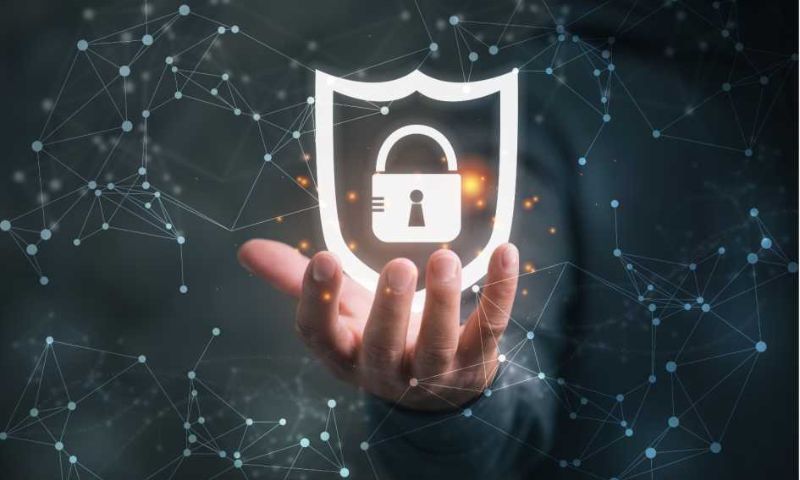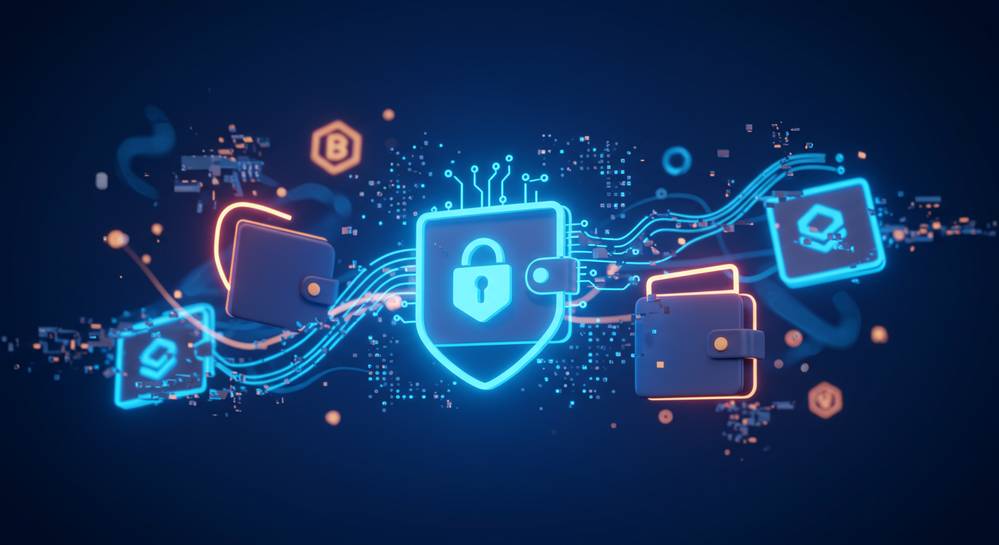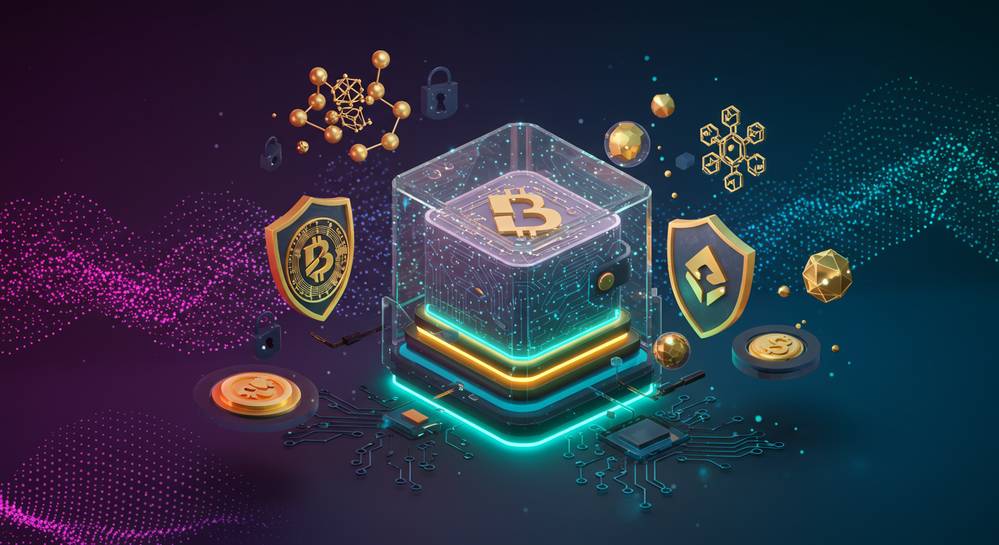How to secure your crypto wallet isn’t just smart; it’s essential. With digital threats lurking around every corner, you’ve got to armor up—and that’s exactly what I’m here to help you with. We’ll start with the basics, slice through the jargon, and show you that crypto wallet security isn’t rocket science. Think of your wallet as a digital piggy bank; you wouldn’t leave it open for anyone to reach in, right? So, let’s clamp down on your coins with ironclad strategies. From beefing up your wallet’s defenses to outsmarting sly online scammers, you’ll learn to shield your digital wealth like a pro. Ready to become a fortress? Let’s dive in.
Understanding Cryptocurrency Wallet Security Basics
The Importance of Cryptocurrency Wallet Protection
Let’s get down to business. Cracking cryptocurrency wallet protection is a must. Just think, you lock your doors at night, right? Same goes for your digital cash. It needs a digital lock, too. Ignoring this can lead to stolen funds. No one wants that! So, always protect your crypto wallet.
Different Types of Digital Wallets and Their Security Measures
You’ve got options when picking a digital wallet. There are hardware wallets, mobile wallets, desktop ones, and even paper wallets. Here’s the deal: different wallets, different security game plans.
Hardware wallets, like Ledger or Trezor, are top-notch. They store your coins offline. You plug them into a computer, transfer your funds, and yank them out. Just like that, your crypto’s off the grid. That means hackers can’t get to it when you’re not looking. But, handle with care, as these can be physical theft targets. Keep them hidden and locked away.
Mobile and desktop wallets are handy. You’ve got your money right there when you need it. But stay alert! Keep your software updated. Fresh updates fix old holes that hackers might sneak through. Always back up your wallet, too. Picture this: Your phone goes for a swim, or your computer crashes. Backups save the day, and your digital dollars.
Cold storage is another cool trick for keeping digital currency safe. Just like bears hibernating, your crypto sleeps away from the internet cold and cozy. This might be on a hardware wallet or a paper wallet with your details printed on it. Remember: Hide them well!
Now, let’s throw in a pinch of 2FA, or two-factor authentication. This levels up your wallet security. It’s like having a guard ask you for a secret code that changes all the time. Even if a hacker guesses your password, without that code, they’re stuck.
Think about multisignature wallets, too. It’s like a sci-fi force field. Not one, but multiple keys are needed to open it up. Think of it as a group lock where you need your buddy to turn another key to open it.
These are goodies to keep close: a secure PIN and tough-to-crack encryption. Your PIN’s like a treasure map that only you can read. Encryption? It scrambles your wallet’s secrets into code that’s crazy hard to crack.
By the way, when you’re on the move, avoid public Wi-Fi for transactions. You wouldn’t yell your bank PIN in a crowded room, would you? Same thing. Public networks are shouting spots for your wallet’s secret keys.
One more thing. You’ve got to practice spotting phishing attacks. These are nasty emails or messages that trick you into giving out keys. Don’t take that bait.
To sew it all up: Understand your wallet’s address safety. Keep your wallet’s address secret. Each one is a doorway to your funds. Keep strangers out.
As for all this: It’s your money. Make it a fortress. Remember, better safe than sorry. Protect your crypto like you protect your last slice of pizza—fiercely and without sharing!
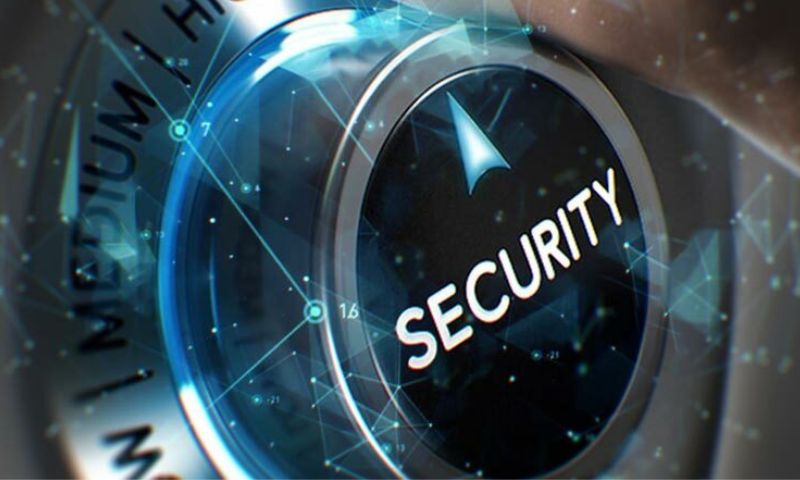
Enhancing Your Wallet’s Defense Mechanisms
Enabling 2FA and the Role of Encryption for Wallet Safety
You need to keep your crypto safe. Think of your wallet as a personal vault. Just like a vault, your wallet’s safety hinges on strong locks. Enter 2-factor authentication (2FA) — it’s like having a guard check two IDs before letting someone in. You prove who you are in two ways. Maybe you give a password and receive a text. That simple step can block a thief cold.
You also need encryption for wallet safety. Encryption jumbles your data so others can’t read it. It turns “open sesame” into a scramble like “e3%9D!0&z.” This keeps your coins out of bad hands. Think of a coded treasure map — it’s no good to a thief without the key. That’s what encryption does for you. It locks your digital treasure.
Now, let’s get fancier with hardware wallets and multisignature setups.
The Advantages of Using Hardware and Multisignature Wallets
Hardware wallets are safe spots for your coins. They’re like tiny bank vaults you can put in your pocket. They keep your digital dollars offline, safe from hackers. When you want to pay or move your money, you plug in your hardware wallet. You know how you need a key to start a car? It’s the same idea.
Multisignature wallets or ‘multisig’ add another layer. They need more than one key to open. It’s like safe deposit boxes that need two keys at once. More keys, more safety. This can mean you team up with others. You all agree to sign off on big moves with your crypto. No solo acts here. Everyone must say yes. This keeps one person from making bad choices that hurt everyone.
Keeping your crypto safe is a big deal. Use 2FA, get your data all scrambled up with encryption. Try a hardware wallet to carry your coins safe, or join a multisig for teamwork security. Stay sharp and keep your digital wealth locked down. Just imagine that tiny pocket vault, and you’re on the right track to protecting your treasure in the crypto world.
Maintaining Secure Access and Recovery
Best Practices for Backing Up Your Wallet Securely
Your crypto wallet holds your digital wealth. So, you must keep it safe. Think of your wallet backup like a lifeboat. It’s vital in case of emergency. First, always use a backup. Store it where only you can access it. A secure location such as a safe can be good.
Let’s dive deeper. Use different forms of backups. Think USB drives or paper. Check them often. Make sure they still work. Write down your wallet recovery phrase. This phrase gets your wallet back if you lose it. Keep this phrase hidden and safe. Do not store it on any device connected to the internet.
Share backups with trust? Only if needed. Maybe give a piece to someone you trust deeply. Be sure they know how to keep it safe. Remember, your wallet’s safety is in its secrecy. If others know, it’s not a secret anymore.
Effective Management of Private Keys and Seed Phrases
Private keys are like your wallet’s password. If someone else gets it, they own your crypto. Never share your private keys. Not with friends, and not online. When it comes to seed phrases, treat them like gold. Losing your seed phrase can mean losing your crypto forever.
Write your seed phrase on paper. Never store it on a computer or phone. These can be hacked. Keep copies in different places. If one is lost, you’ll have another. Consider a safety deposit box or a secure home safe. And remember, water or fire can destroy your backups. So, protection against the elements is key.
Enabling 2FA, or two-factor authentication, adds an extra layer of security. It’s an extra step for anyone trying to get into your wallet. Choose a good 2FA app. Avoid using text messages for 2FA. Hackers can sometimes intercept these.
For hardware wallets, update regularly. Updates fix known security issues. They can also add new features. Keeping your software fresh helps shield your wallet from cyber thieves.
Finally, keep learning. Cybersecurity training can help you spot risks. It tells you what to look for. Things like phishing emails or fake websites. Knowing these can help you protect your wallet. Use antivirus software and do not click on links from strangers.
Keep a sharp eye on your wallet. Be aware of where and how you access it. Avoid public Wi-Fi when checking your balance or making transactions. Public networks can be risky. They can expose your wallet to hackers. Instead, use a VPN, a virtual private network. It keeps your online deeds private.
Always secure your digital wallet. Think of it like a digital fortress. Every layer of security you add is one more wall for thieves to break. And the harder it is to break, the safer your crypto will be.
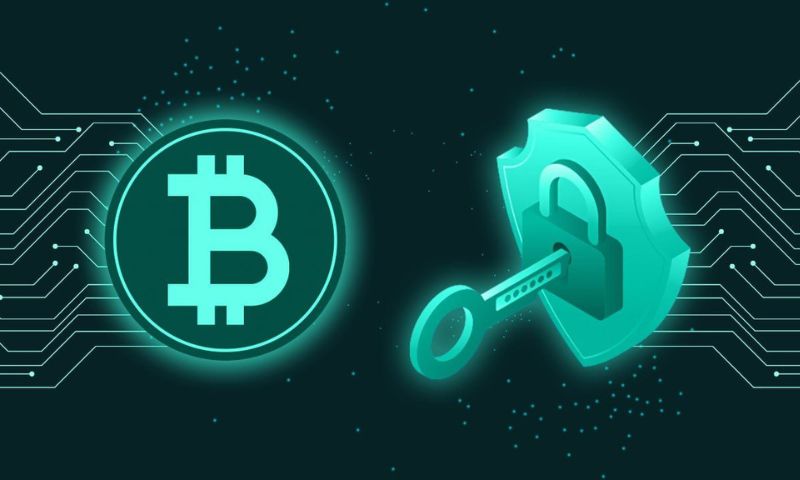
Staying Vigilant Against External Threats
Recognizing Phishing Attacks and Avoiding Common Scams
Beware, friends! Phishing lures you to fake sites, then steals your wallet details. Avoid clicking strange emails or suspicious links, always. A key tip: your real wallet provider never asks for your private keys or password. Scammers might say you’ll lose your money if you don’t share these. That’s a trick!
Phishing doesn’t just come in emails. It can happen through fake apps, too. Always download apps from trusted sources. Check reviews and update them often. Be smart! Use different passwords for every account. If that sounds tough, password managers can help a lot.
And let’s get real about using public Wi-Fi. While checking on your digital cash at a café seems harmless, it’s risky. Anyone might peek into your crypto dealings. Do your wallet a big favor: trade only on secure, private networks. Better yet, use a VPN when you trade. It’s like a secret tunnel for your online activities.
The Significance of Regular Software Updates and Safe Transaction Habits
Updating your wallet software is a must for safety. Think of updates as a superhero for your wallet—blocking new threats. They fix weak spots before bad guys can find them. Don’t wait, update!
Imagine making a transaction in the open. Feels unsafe, right? Well, that’s often what happens online. But with secure transaction habits, you control who sees your moves. Confirm every transaction step by step. Be patient; double-check all details. This slow and careful approach keeps your wealth safe.
To sum it up: protect your crypto life the same way you protect your real life. Lock down your digital doors. Practice safe habits every single day. With these solid steps, your digital wealth stays snug as a bug in a rug.
To wrap it up, we dove into how to shield your crypto wallet from risk. We kicked off by stressing why keeping your digital coins safe is key. There are many wallets out there, each with its own guard in place. Then, we talked about beefing up your wallet’s armor. This includes turning on two-step checks and using tough codes to lock things down. We also saw how tools like hardware wallets and shared-signature setups can offer more safety.
We didn’t stop there. We covered how you can back up your wallet and handle your secret keys and recovery phrases right. All this helps make sure you and only you can get to your money. Lastly, we tackled staying sharp against hackers and scams. Spotting bad emails and dodgy deals can save you a lot. And yes, keeping your software fresh and being smart when you spend are must-dos.
In a nutshell, crypto wallet security isn’t rocket science. It’s about making good moves, staying alert, and using the best tools for the job. Stick to these tips, and you’ll be on your way to defending your digital dollars like a pro. Stay safe out there!
Q&A :
What are the best practices for keeping a crypto wallet secure?
Keeping your crypto wallet secure is essential to protect your digital assets. To maximize security, follow these best practices:
- Use Strong Passwords: Create complex and unique passwords that are difficult to guess. It’s advisable to use a combination of letters, numbers, and special characters, and to update your passwords regularly.
- Enable Two-Factor Authentication (2FA): Activating 2FA adds an extra layer of security, typically requiring a code from a mobile device in addition to your password to access your wallet.
- Keep Software Up-to-Date: Always update your wallet software to the latest version. Developers constantly improve security features and fix vulnerabilities in updates.
- Use a Hardware Wallet: For large amounts of cryptocurrency, consider using a hardware wallet—a physical device that stores your private keys offline.
- Backup Wallet Regularly: Maintain a secure backup of your wallet’s private keys or recovery phrases. Store it in a safe, offline environment.
- Be Cautious with Public Wi-Fi: Avoid accessing your crypto wallet via public Wi-Fi networks. They can be insecure and easily compromised by hackers.
Remember, security is an ongoing process; stay informed on the latest security protocols to keep your wallet as safe as possible.
How can I recognize and avoid phishing scams targeting my cryptocurrency wallet?
Phishing scams are a common threat to cryptocurrency wallets. Here’s how to recognize and avoid them:
- Suspicious Emails and Messages: Be wary of emails or messages from supposed wallet services or exchanges that ask for sensitive information like private keys or passwords.
- Check URLs Carefully: Always double-check the URL of the websites you are visiting to make sure they are legitimate and haven’t been altered in a deceptive way.
- Never Share Private Keys: Legitimate services will never ask for your wallet’s private keys or recovery phrases.
- Use Browser Security Extensions: Employ browser extensions that can help detect and block phishing websites.
- Educate Yourself: Stay updated on the latest phishing tactics by following trusted sources in the crypto community.
By staying vigilant and cautious with your information, you can greatly reduce the risk of falling prey to phishing scams.
What should I do if my cryptocurrency wallet is hacked?
In the unfortunate event that your cryptocurrency wallet is hacked, take these immediate steps:
- Transfer Assets: If possible, move your remaining funds to a new, secure wallet.
- Change Passwords: Immediately change the passwords of any related accounts, such as exchanges or email tied to your wallet.
- Check for Malware: Run a thorough scan of your devices for any malware that may have compromised your wallet.
- Contact Support: Get in touch with the support team of your wallet provider for assistance.
- Report the Hack: Report the incident to the relevant authorities and consider posting a warning in the community to prevent others from being targeted.
- Secure Your Devices: Before setting up a new wallet, make sure your devices are secure and malware-free.
It’s critical to act fast and take the necessary actions to secure your assets and prevent further losses.
Is it safe to store large amounts of cryptocurrency in an online wallet?
Storing large amounts of cryptocurrency in an online wallet presents certain risks, such as susceptible to cyber-attacks, phishing scams, and unauthorized access. To mitigate these risks:
- Consider splitting your funds between multiple wallets—both hot (online) and cold (offline) storage solutions.
- Only use reputable online wallets with a strong track record of security.
- Ensure that the online wallet has robust security measures like 2FA, multi-signature capabilities, and insurance against theft.
For significant sums of cryptocurrency, security experts often recommend using cold storage methods like hardware wallets, which provide superior security by storing private keys offline.
Can I recover my crypto assets if I lose my wallet’s private key?
Losing your wallet’s private key can mean losing access to your crypto assets permanently. Recovery options are extremely limited and depend greatly on:
- Wallet Type: Some wallets provide recovery phrases or backup options—use these if available.
- Custodial Wallets: If your assets are in a custodial wallet from an exchange, you may be able to regain access through their customer support.
- Non-Custodial Wallets: Unfortunately, for most non-custodial wallets, loss of the private key usually results in permanent loss of assets.
As a preventative measure, always keep backups of your recovery phrases in secure, offline locations.

